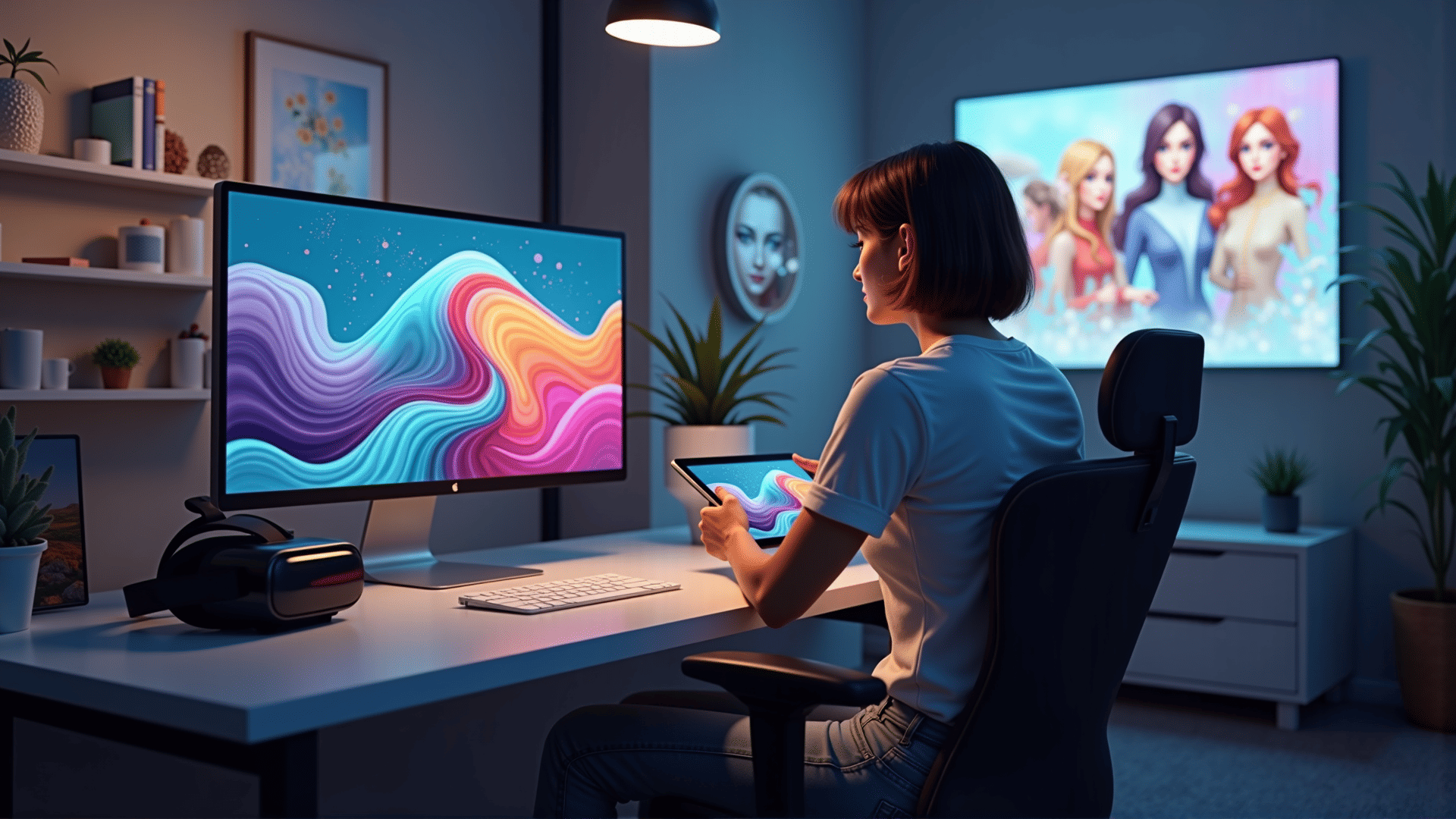In recent years, the confluence of technology and art has given rise to a new era of creativity, dramatically transforming the ways in which art is produced, consumed, and appreciated. This intersection has not only broadened the horizons for artists but also reshaped the landscape of the art world, introducing a plethora of digital art forms that are redefining the future of creativity and expression.
The advent of digital tools and platforms has revolutionized traditional art forms, allowing artists to experiment with new techniques and reach wider audiences than ever before. Software like Adobe Photoshop and Illustrator has become essential in an artist's toolkit, offering capabilities that range from intricate digital illustrations to complex 3D renderings. Beyond this, the introduction of virtual reality (VR) and augmented reality (AR) have expanded the canvas into immersive environments, where creators can craft experiences that transcend the limitations of physical space.
Virtual galleries have emerged as a novel way to showcase art, breaking geographical barriers and making art more accessible to audiences worldwide. Platforms like Oculus VR and Mozilla Hubs enable art enthusiasts to explore expansive digital universes filled with curated exhibitions, engaging with art in ways that were previously unimaginable. These virtual spaces offer a democratized approach to art appreciation, allowing anyone with internet access to experience collections that might otherwise be confined to specific physical locations.
Furthermore, the rise of Non-Fungible Tokens (NFTs) has fundamentally altered the art market. NFTs, which are unique digital identifiers recorded on a blockchain, have created a burgeoning marketplace where artists can sell their digital works directly to collectors. This innovation has opened up a new revenue stream for artists and has challenged traditional notions of ownership and provenance in the art world. High-profile NFT sales, such as Beeple's "Everydays: The First 5000 Days," which sold for $69 million at Christie's, have brought significant attention to digital art, legitimizing it in the eyes of many skeptics.
This technological evolution has fostered a spirit of inclusivity and experimentation, providing opportunities for artists from diverse backgrounds to make their mark on the global stage. Social media platforms, such as Instagram and TikTok, serve as dynamic dissemination channels where talented individuals can gain visibility and connect with like-minded communities. This shift has empowered emerging artists who may traditionally have been marginalized or overlooked by conventional art institutions.
However, the rise of digital art forms is not without its challenges. Issues related to copyright, authenticity, and the environmental impact of blockchain technology remain topics of intense debate. Moreover, as the digital landscape continues to evolve, there is an ongoing conversation about the sustainability of the digital art market and how it will coexist with traditional art forms.
Despite these challenges, the influence of technology on art is undeniable, offering endless possibilities for innovation and expression. As artists continue to push boundaries and explore new mediums, digital art forms are set to play a pivotal role in the ever-evolving narrative of human creativity. In this brave new world, technology does not replace the essence of artistry; rather, it expands its potential, allowing for more inclusive, dynamic, and impactful artistic endeavors.
